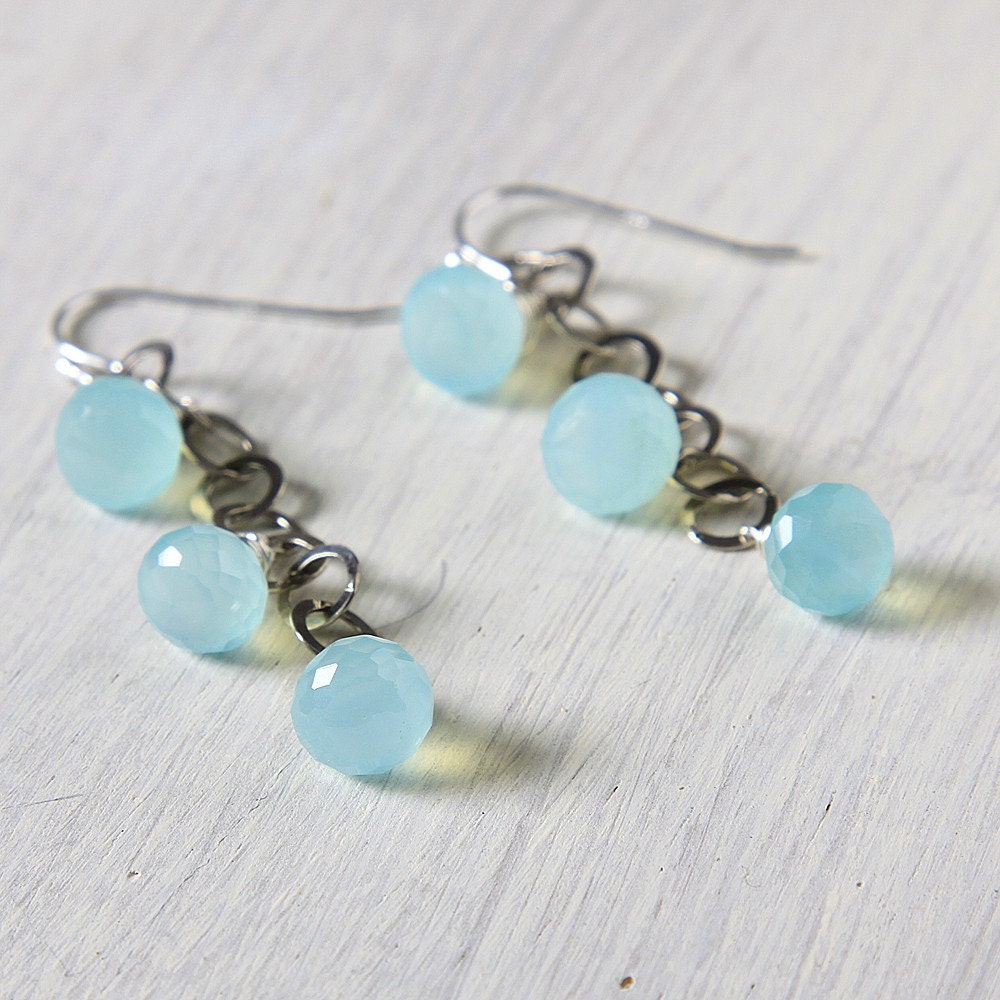
From Wikipedia: Chalcedony ( /kælˈsɛdəni/) is a cryptocrystalline form of silica, composed of very fine intergrowths of the minerals quartz and moganite.[2] These are both silica minerals, but they differ in that quartz has a trigonal crystal structure, while moganite is monoclinic. Chalcedony's standard chemical structure (based on the chemical structure of quartz) is SiO2 (Silicon Dioxide).
/kælˈsɛdəni/) is a cryptocrystalline form of silica, composed of very fine intergrowths of the minerals quartz and moganite.[2] These are both silica minerals, but they differ in that quartz has a trigonal crystal structure, while moganite is monoclinic. Chalcedony's standard chemical structure (based on the chemical structure of quartz) is SiO2 (Silicon Dioxide).
Chalcedony has a waxy luster, and may be semitransparent or translucent. It can assume a wide range of colors, but those most commonly seen are white to gray, grayish-blue or a shade of brown ranging from pale to nearly black.
The name "chalcedony" comes from the Latin calcedonius, the word used to translate the Greek word khalkedon, found only once, in the Book of Revelation; according to the OED a connection with the town of Chalcedon in Asia Minor is "very doubtful".[3] There is no reason to assume that the precious stone referred to by this name in the Bible is the same as what is now understood by the name.[4]
Just FYI ...




No comments:
Post a Comment